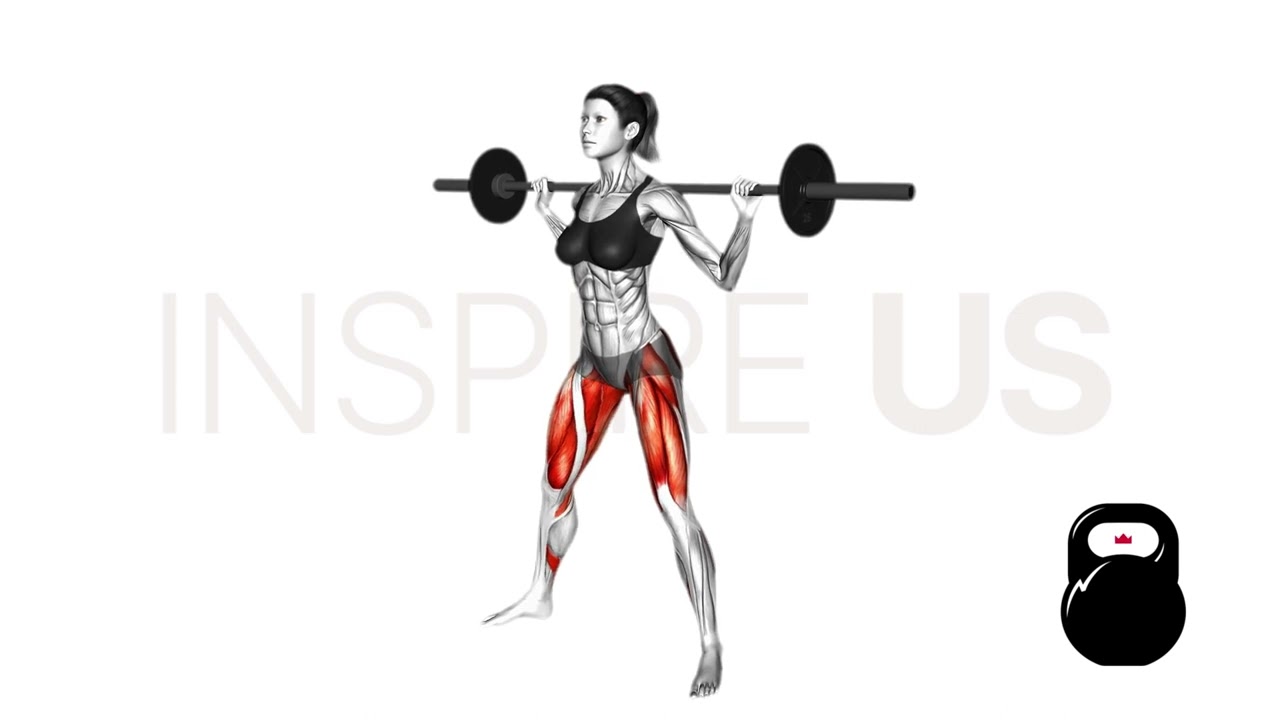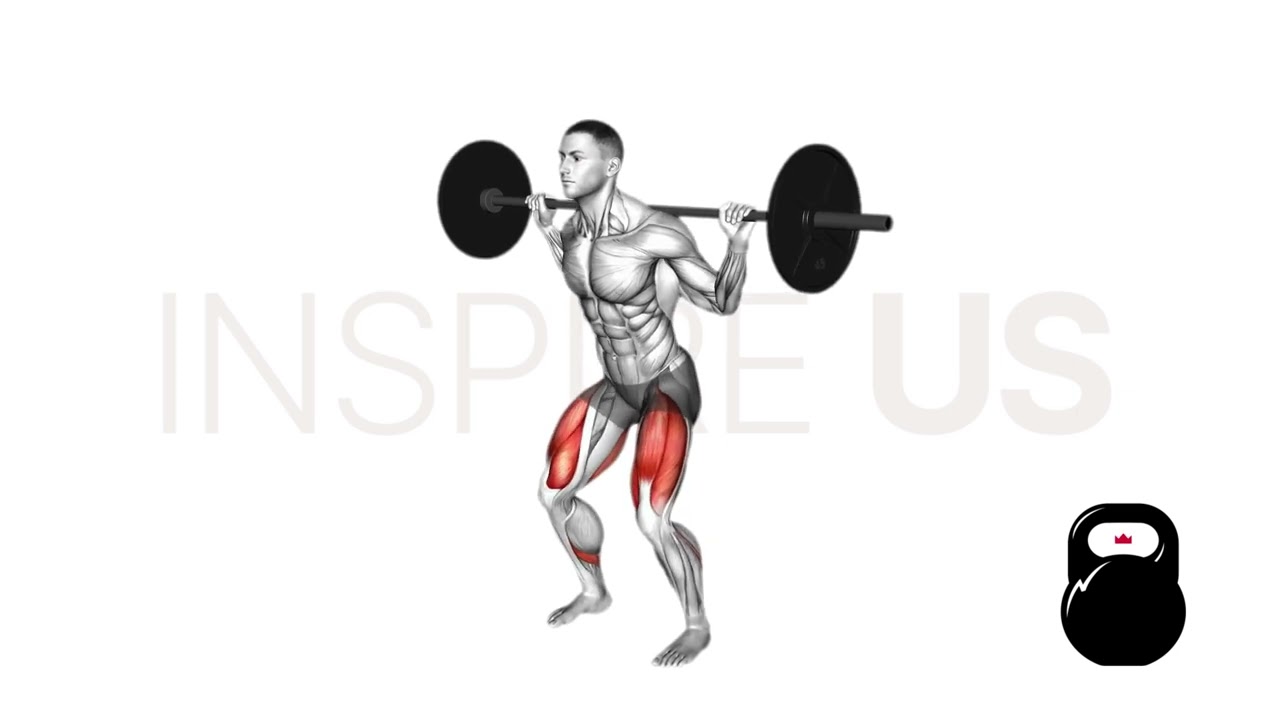Sumo vs Conventional Squat: Differences Explained
The conventional squat is considered to be one among the most quintessential lower body exercises ever developed. However, it may not always be the correct choice.
Lifters with more specific needs and goals may instead turn to similar exercises with relatively minor differences in mechanics - such as the highly effective sumo squat.
In this article, we will compare the sumo squat and the regular squat, going into detail over their differences in mechanics, stance and muscles worked.
What are Sumo Squats?
Occasionally referred to as wide-stance squats, the sumo squat is classified as a closed chain compound exercise of traditionally high intensity.
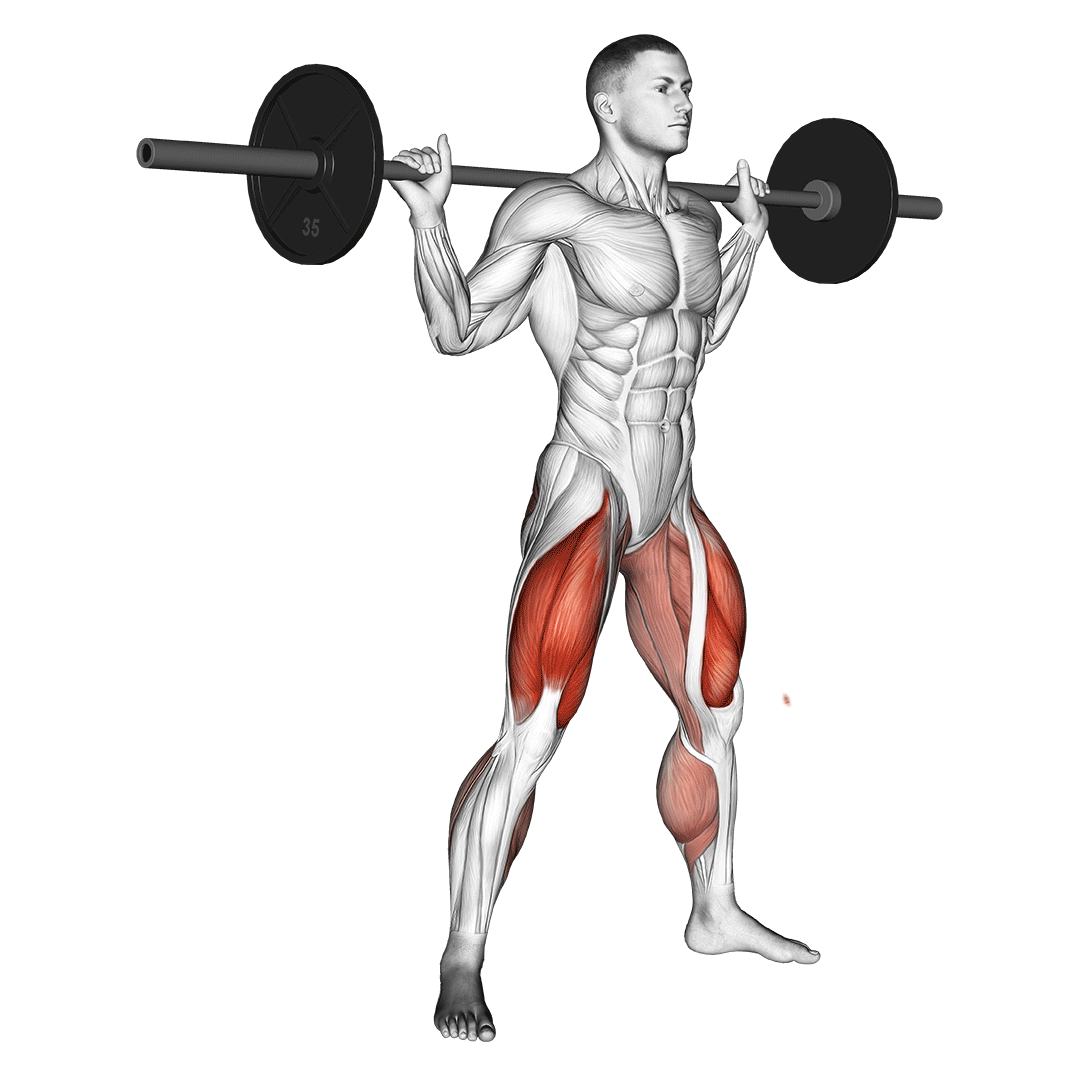
Sumo squats are most often performed with the use of a barbell and set of weight plates, and are meant to target the posterior chain and inner thigh adductors.
The sumo stance squat is characterized by a significantly wider foot placement than would be seen in many other squat exercise variations. Because of this, it can be programmed as either a supplementary exercise or as the main compound movement of a workout session.
Advantages of Sumo Squats
The main advantage of sumo squats is its greater recruitment of muscle groups that are otherwise recruited in only a minor capacity during other squat variations.
Including the sumo squat into a training program can help alleviate sticking points, lower body instability and maximize the strength of the leg musculature as a whole.
In addition, the wider stance of the sumo squat allows for relatively more weight to be moved as the range of motion is shortened. This can be particularly useful for strength athletes who wish to acclimatize themselves to heavier amounts of weight.
Disadvantages of Sumo Squats
Although sumo squats indeed offer the lifter many benefits, they are also comparatively less effective at inducing hypertrophy than other squat variations.
Unlike the regular squat, the sumo squat features a distinctly shorter range of motion. A shorter range of motion equates to less time under tension and the muscles being worked in a smaller range - of which are key components of achieving muscular hypertrophy.
Furthermore, sumo squats may also be more demanding in certain aspects than other squat variations. Lifters with poor balance, poor hip-thigh mobility or those with knee valgus issues may wish to first correct their physiological problems prior to attempting the sumo squat.
How-to:
To perform a sumo squat, the lifter will set their feet as much as twice the distance of their shoulders apart, toes pointed outwards at approximately 45 degrees.
Keeping the spine in a neutral position, the torso upright and the core contracted, the lifter will then lower themselves towards the floor. This is done by slightly hinging the hips backwards as they bend alongside the knees.
Ensuring that the knees track parallel with the toes, the lifter will lower themselves until the quadriceps are parallel with the floor.
To complete the repetition, they will push through their heels and return to the starting position.
What are Conventional Squats?
Otherwise known as “back squats”, the conventional squat is a multi-joint closed chain exercise of moderate to high intensity. It is traditionally performed so as to build the entirety of the lower body, with a particular focus on the quadriceps muscles.
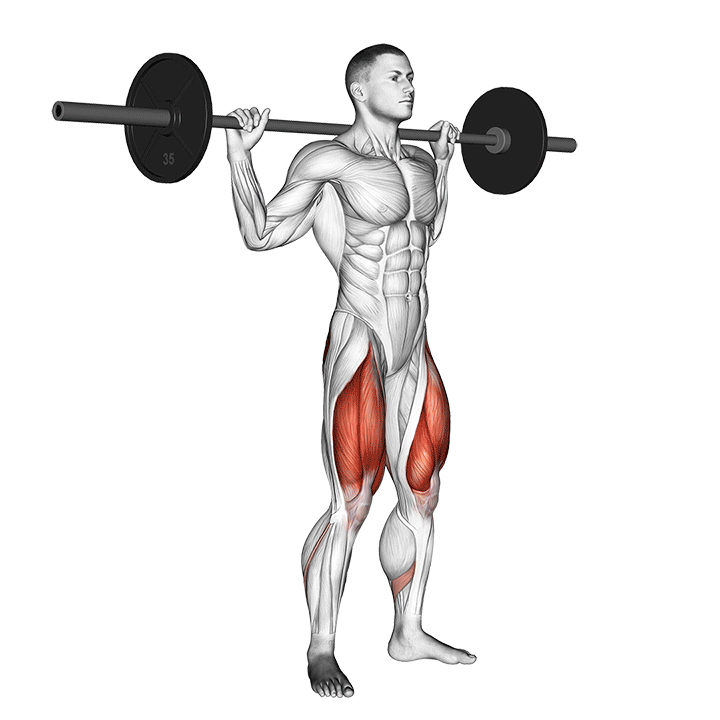
Back squats are often referred to as the “king of exercises” due to their effectiveness and widespread inclusion into training programs of all types.
Unlike sumo squats, conventional squats take a somewhat more narrow stance and as such are somewhat more forgiving in terms of mobility and balance.
Advantages of Conventional Squats
The primary advantage of performing regular squats is in its gross effectiveness as an exercise.
With correct programming, squats can build both strength and mass in the muscles of the quadriceps, as well as in the larger muscles of the lower posterior chain.
Furthermore, the conventional squat closely replicates the natural squatting movement that the body is designed to perform. This can make mastering the squat easier for novice weightlifters, and indeed is an important baseline exercise that should be learned prior to attempting other squat variations.
Disadvantages of Conventional Squats
In terms of disadvantages, conventional squats are comparatively less effective than sumo squats at targeting certain specific muscles of the lower body.
In addition, lifters may find that they are unable to move as much weight with the conventional squat due to its larger range of motion.
Apart from loading capacity and muscular recruitment, the back squat also tends to place greater load on the hips and knees due to its vertical distribution of resistance. Consequently, this equates to a somewhat greater risk of injury when performed incorrectly.
How-to:
Standing with the feet set approximately hip-width apart and pointing only slightly outwards, the lifter will contract their core, keep their torso upright and their spine in a neutral position prior to beginning the repetition.
Once in the correct stance, they will bend at the hips and knees as they push their pelvis backwards; This should lower the body downwards.
When the hip crease is parallel with the knees, the lifter will push through their heels and rise back to their original standing position - thereby completing the repetition.
Sumo and Conventional Squats - Stance Differences
The first point of distinction to investigate when comparing regular and sumo squats is their individual stances. The sumo squat features a wider and more outward-angled stance, whereas the conventional squat has a hip-width and forward-facing stance.
Foot Placement
Sumo squats are named as such because they take on a stance similar to that of a sumo wrestler. This is often several feet wider than shoulder-width apart.
In addition to the width of the stance itself, sumo squats will often angle the toes at 45 degrees so as to allow for easier knee tracking.
In comparison, conventional squats will place the feet at hip-width apart, with the toes pointing forwards or slightly outwards.
Be it with conventional or sumo squats, keep in mind that the stance width will vary according to individual variations in hip mobility and leg proportions.
Knee and Toe Tracking
Although hotly debated, most sources agree that tracking the knees over the toes during sumo squats is decidedly bad form and may result in injury. This is less of an issue with conventional squats, as the narrower stance and lesser mobility demands will help control the risk therein.
Pelvic Hinge and Torso Angle
Because of the significant differences in stance between sumo and back squats, related mechanics will also be subsequently affected.
For sumo squats, there is a lesser usage of the hip hinge - meaning that the lifter will thrust their pelvis backwards to a comparatively lesser degree. This allows for a more upright torso as well.
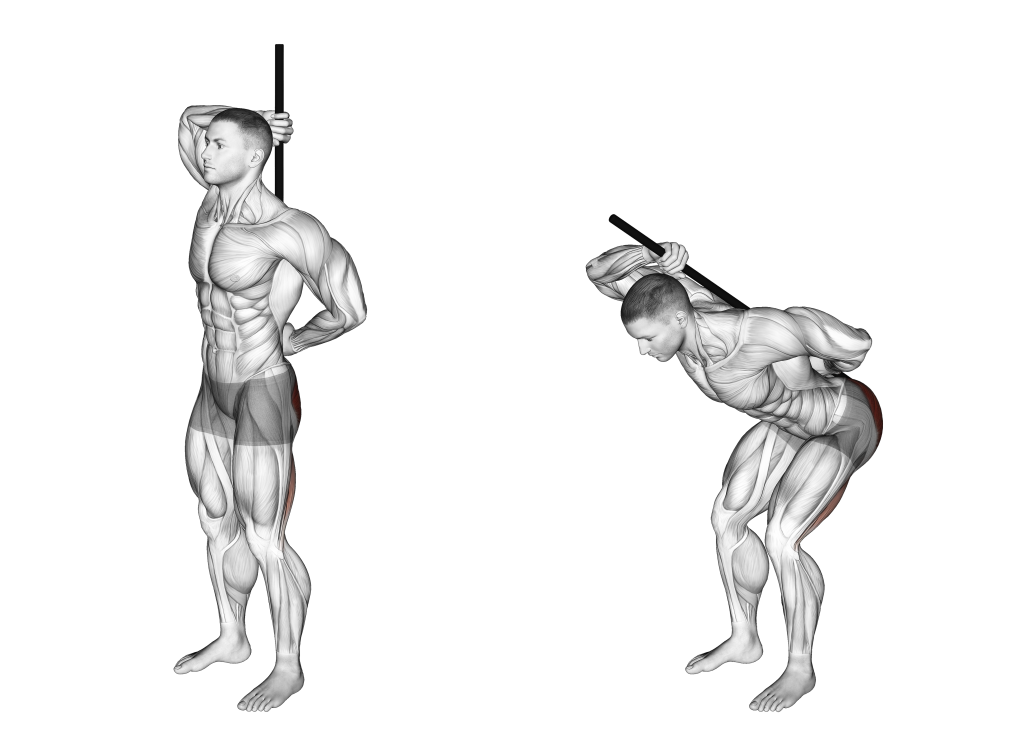
For conventional squats, greater utilization of the hip hinge mechanic is needed to maintain balance and ensure proper depth. Greater hinging equates to a more forward incline of the torso, and as such distributes resistance more towards the lower back and joints of the legs.
To preface, both exercises are perfectly safe when performed correctly. However, the more precarious torso angle and vertical resistance distribution of the conventional squat can make it more dangerous when poor form or excessive weight is encountered.
Sumo and Conventional Squats - Muscular Recruitment
In truth, both sumo and conventional squats recruit much the same muscle groups. However, they differ in terms of emphasis.
Regular back squats place greater emphasis on the quadriceps and glutes. In comparison, sumo squats are better at working the adductor muscles and hamstrings.
Posterior Chain Muscles
Both sumo squats and conventional squats target the glutes quite effectively - and at near equal measure, although the back squat does indeed showcase slightly greater recruitment.
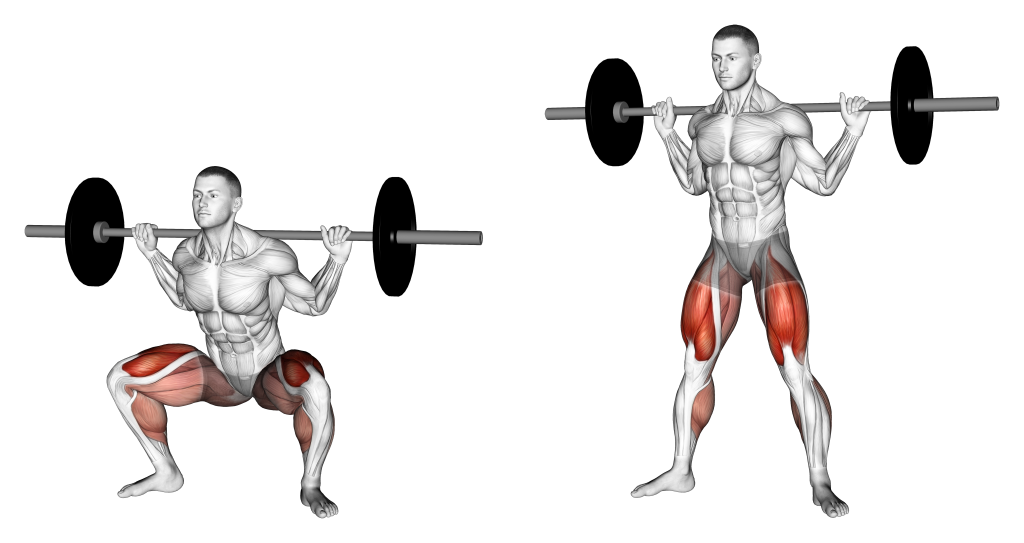
In comparison however, the hamstrings are somewhat better targeted by sumo squats, depending on the particular stance width being used.
In EMG tests, the sumo squat appears to show on-par (if not superior) recruitment of the biceps femoris section of the hamstring muscles.
Quadriceps Muscles
Across the board, it is regular squats that are considered to be better for working the quadriceps, not the sumo squat. This is especially true with the rectus femoris section of the quadriceps, where most other squat variations elicit a greater response in comparison.
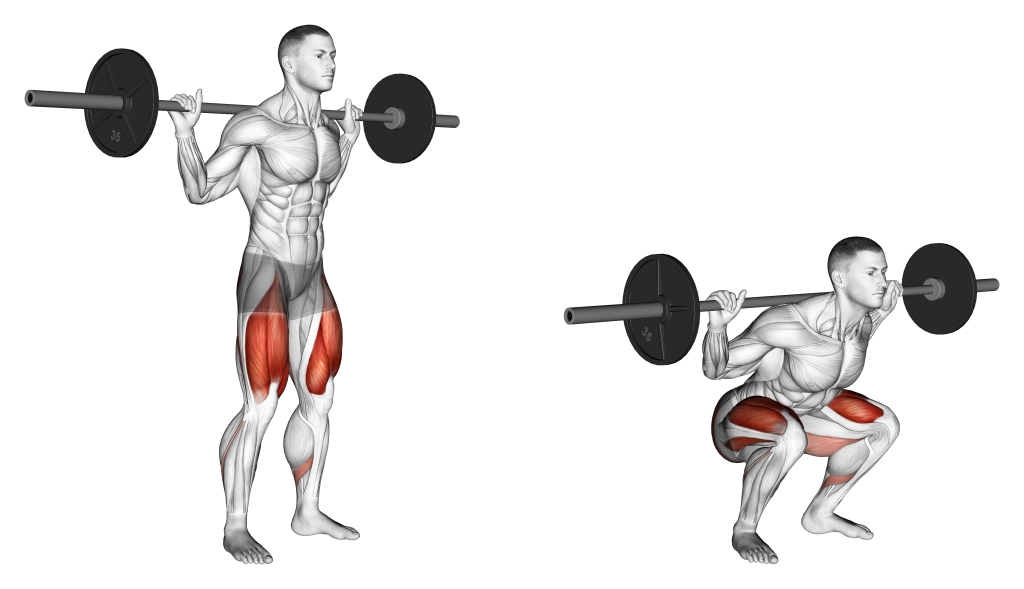
These findings are generally in-line with what many powerlifters have theorized - sumo squats are a relatively poor tool for building the quadriceps.
Stabilizer Muscles
In terms of stabilizer muscle recruitment, the conventional squat is considerably more taxing on the erector spinae and other lower back musculature. However, the adductor muscles of the hips are better recruited by sumo squats.
Apart from the hips and back - the abdominals and obliques show nearly equal measures of response to either squat variation.
In summary - for greater back stabilizer work, take the regular squat. For greater hip adductor work, the sumo squat.
Sumo and Conventional Squats - Complexity and Difficulty
Both squat variations are relatively intense, but differ in terms of their technical complexity - as well as what allows them to be performed safely.
Without going into detail, it can safely be said that conventional squats feature a slightly greater risk of injury but are less demanding in mobility. In comparison, sumo squats are safer for many of the body’s joints, but require greater mobility.
Risk of Injury
Because conventional squats are knee-dominant and much of the resistance is vertically distributed, somewhat greater pressure on the spine, lower back and leg joints is present.
This can compound when excessive weight or poor form takes place - meaning back squats have a greater risk of injury.
In comparison, sumo squats allow for a far more vertical torso and a more even distribution of load. This makes them safer to perform - so long as the lifter has sufficient mobility.
Keep in mind that there should ideally be no risk of injury with either exercise.
Injury risk can be reduced by following proper form, lifting a reasonable amount of weight and performing preparatory warm-up work beforehand.
Mobility Requirements
Both variations require mobility in different parts of the body. Sumo squats require excellent hip mobility and no predisposition to knee valgus, whereas conventional squats require greater knee and glute mobility.
Technical Expertise Requirements
While both exercises should be mastered in terms of form, the conventional squat may be somewhat easier to learn simply because it is a more natural movement than the sumo squat.
In addition, sumo squats will require a greater sense of balance and bodily control, as the torso remains more upright and the center of the lifter’s gravity is in a less supported position further off the ground.
It is generally better for novice weightlifters to first master the conventional squat prior to learning the sumo squat.
Sumo and Conventional Squats - Range of Motion and Loading Capacity
Apart from stance, mechanics and muscular recruitment, the sumo squats and back squats also differ in terms of the training stimulus they elicit.
To put it shortly; sumo squats allow for more weight, but in a shorter range of motion. Conventional squats will allow for less weight, but a greater capacity for time under tension on account of a wider range of motion.
Range of Motion
Because sumo squats feature a wider stance, the body will need to travel a relatively shorter distance in order to reach parallel depth. This means that sumo squats feature a comparatively smaller range of motion.
Although it will also depend on tempo, a shorter range of motion equates to less time under tension - of which is needed in order to build muscle mass and endurance.
In comparison, conventional squats require the knees to bend to a greater degree, and the pelvis to lower further than what sumo squats would allow - creating a larger range of motion. Greater gluteal recruitment is a further benefit of this wider range of motion.
Working Weight Capacity
Lifting weight is often an equation where energy expended is directly correlated with how far the weight must be moved, and for how long a span of time.
In the case of the sumo squat, this means that more energy can be directed towards moving a greater amount of weight as the lifter will squat to a shorter depth.
Comparatively, the conventional squat will often be performed with less weight due to its larger range of motion.
Which Exercise is Better, Sumo Squats or Conventional Squats?
So - keeping all these factors in mind, which exercise is the better choice for you?
The answer is most likely the conventional squat.
With a more natural movement, greater emphasis on the largest muscles of the lower body and its far larger range of motion - few exercises can compete with the barbell back squat.
However, if you possess excellent hip mobility and find that your inner thigh musculature is lacking in development, substituting the conventional squat with the sumo squat in a few workout sessions may be the right choice.
Despite the differences between the two variations, keep in mind that it is also up to personal preference.
If you find the back squat to be uncomfortable, it is entirely fine to perform an exercise more to your liking. What’s important is to find the most compatible movement for you and your goals.
References
1. Erdağ, Deniz & Yavuz, Hasan. (2020). Evaluation of Muscle Activities During Different Squat Variations Using Electromyography Signals. 10.1007/978-3-030-35249-3_114.
2. Slater, Lindsay V.; Hart, Joseph M.. Muscle Activation Patterns During Different Squat Techniques. Journal of Strength and Conditioning Research 31(3):p 667-676, March 2017. | DOI: 10.1519/JSC.0000000000001323

